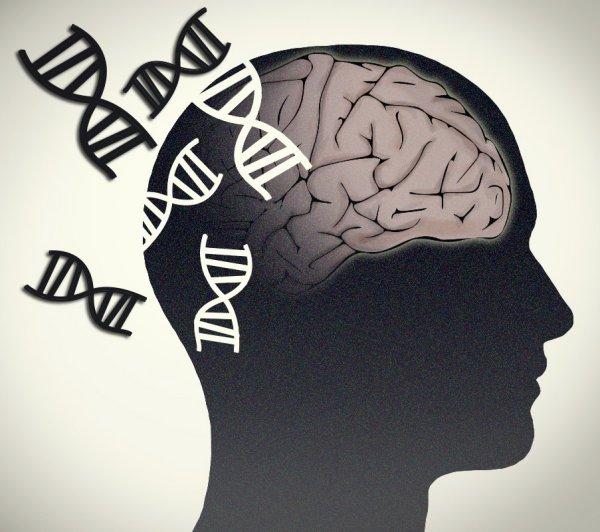
Researchers at Children’s Hospital of Philadelphia (CHOP) have identified a gene that acts as a master regulator of schizophrenia during early human brain development, using computational tools designed to investigate gene transcription networks in large collections of brain tissues.
The study represented one of the first successful examples of combining computational approaches and stem cell-based experimental models to unravel complex gene networks in psychiatric diseases—and could be applied toward the development of future treatments, CHOP said.
“Pinpointing master regulators may help guide us toward priority targets for novel treatments in the future,” Kai Wang, PhD, of the department of pathology and laboratory medicine and the Raymond G. Perelman Center for Cellular and Molecular Therapeutics (CCMT) at CHOP, said in a statement.
Wang and colleagues used computational systems biology approaches to discern a disease-relevant core pathway in schizophrenia and to discover a master regulator in that pathway that affects hundreds of downstream genes.
“Because hundreds, or even thousands, of genes may contribute to the risk of schizophrenia, it is crucial to understand which are the most important ones, orchestrating core networks in the disease,” Wang added.
Wang and colleagues contrasted the current level of knowledge on schizophrenia with recent advances in cancer research, which has linked many gene pathways and networks with specific subtypes of cancer, and so enabled more precise diagnosis and personalized treatment approaches based on genetic profile.
The team of researchers analyzed two independent datasets of biological samples from schizophrenia patients and control subjects. One dataset, the CommonMind Consortium (CMC), is a public-private partnership with well-curated brain collections. The other was a collection of primary cultured neuronal cells derived from olfactory epithelium (CNON), generated by study co-authors at the University of Southern California and SUNY Downstate.
The CMC dataset contained adult postmortem brain tissue. Researchers validated findings from the CMC study by using the CNON dataset, which represented cell cultures that contain neuronal cells from nasal biopsies.
Applying an algorithm developed at Columbia University to reconstruct gene transcription networks, the study team identified the gene TCF4 as a master regulator for schizophrenia. The gene encodes transcription factor 4, a basic helix-loop-helix transcription factor.
A “most promising” gene
A 2013 study by Edwin J. van den Oord, PhD, of Virginia Commonwealth University, and colleagues, described TCF4 as being “among the top 10 most promising SCZ [schizophrenia] candidate genes.”
Van den Oord and colleagues referenced a 2012 study by Alexander B. Niculuescu, MD, PhD, of Indiana University School of Medicine, and colleagues, that included TCF4 among the “top genes” involved in schizophrenia. While defects in the gene are a cause of Pitt-Hopkins syndrome, a form of mental retardation, Niculescu and his team added: “TCF4 has additional genetic evidence for association with schizophrenia-relevant phenotypes.”
While TCF4 had been identified as a locus for schizophrenia risk in past genome-wide association studies (GWAS), Wang acknowledged, little was known of the gene’s functional effects.
The study team investigated those effects by knocking down the gene’s expression in neural progenitor cells and glutamatergic neurons derived from induced pluripotent stem cells in the lab of Wang’s co-leader of the research, Jubao Duan, PhD, the Charles R. Walgreen research chair and an associate professor at the Center for Psychiatric Genetics of North Shore University HealthSystem (NorthShore) and the University of Chicago in Evanston, IL.
When knocked down, the predicted TCF4 regulatory networks were enriched for genes showing transcriptomic changes, as well as for genes involved in neuronal activity, schizophrenia risk genes having genome-wide significance, and schizophrenia-associated de novo mutations, the researchers found, based on observations on three different cell lines.
Seeking other master regulators
While some cellular effects of TCF4 dysregulation had been previously shown in mice, Duan noted that the results from perturbing TCF4 gene networks in human stem cell models may be more relevant to the neurodevelopmental aspects of neuropsychiatric disorders.
Among further research to follow from the study, Wang said, will be whether other master regulators may play a role in schizophrenia in addition to TCF4. The presence of other master regulators could facilitate precision medicine in psychiatric disorders by allowing for classifying patients with schizophrenia into subgroups more responsive to specific treatments.
Other approaches may involve pursuing single-cell genomics studies aimed at assessing the cell types that are most influenced by dysregulating gene expression, according to the study’s first author, Abolfazi Doostparast Torshizi, PhD, of the CCMT at CHOP.
Wang—who also holds a faculty position at the Perelman School of Medicine at the University of Pennsylvania—said limitations of the study included basing the empirical validation on neural progenitor cells and glutamatergic neurons. Other cell types that have also been implicated in the development of schizophrenia may be investigated in the future, such as interneurons and microglia.
“Although our relatively homogeneous two-dimensional neuronal cultures (80 to 95%) have their advantages, they may not reflect the in vivo brain circuit where different cell types interact with each other,” the team noted. “Therefore, it would be interesting to interrogate possible cell type–specific effects of TCF4 knockdown in a mixed cell culture or using brain organoids, followed by single-cell RNA-seq (scRNA-seq) analysis.”
The study was supported by NIH grants MH108728, HG006465, MH086874, MH102685, MH106575, MH116281; and the Alavi-Dabiri Postdoctoral Fellowship Award.












